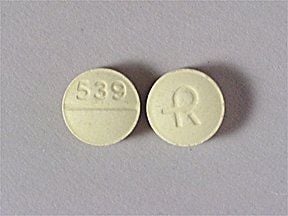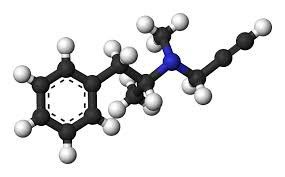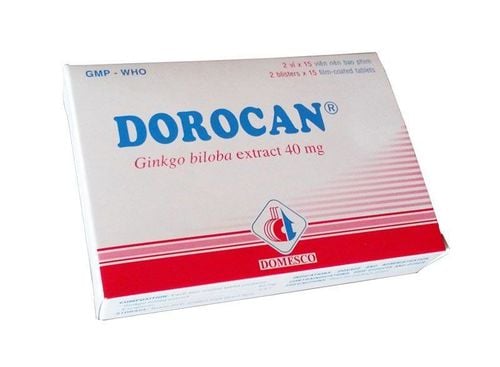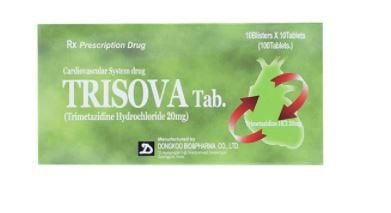This is an automatically translated article.
Posted by Master, Doctor Vu Duy Dung - Department of General Internal Medicine - Vinmec Times City International HospitalLevodopa is the gold standard of dopamine replacement therapy in Parkinson's disease. It is indicated with a dopa decarboxylase inhibitor (carbidopa) to reduce its peripheral breakdown and reduce nausea. Levodopa is particularly effective in the treatment of immobility and stiffness, while its effects are variable in the treatment of tremors. Clinical studies suggest that levodopa treatment does not aggravate disease progression.
1. Carbidopa/levodopa
Carbidopa/levodopa comes in rapid-release, extended-release, and oral disintegrating tablets. A newer form of extended-release carbidopa/levodopa (IPXo66) has been designed for rapid absorption, ease of administration, and a longer duration of clinical action. IPXo66 has been clinically shown to improve on time without unpleasant turbulence and reduce off time in advanced Parkinson's disease. An inhaled powdered form of levodopa has also been approved by the FDA for the intermittent treatment of off episodes in Parkinson's patients taking carbidopa/levodopa.

Thuốc carbidopa-levodopa điều trị bệnh Parkinson
Another form of levodopa is levodopa/carbidopa which is an enteric gel that delivers continuous medication by percutaneous endoscopic gastrostomy with a catheter extending to the jejunum (PEG-J). Clinical trials have demonstrated that enteric levodopa/carbidopa gel reduces plasma levodopa fluctuations, off time and on time without unpleasant dyskinesia compared with oral medication in patients with advanced Parkinson's disease. develop. Levodopa/carbidopa enteral gel may be recommended for Parkinson's patients whose motor fluctuations and dyskinesia cannot be optimally treated with oral medication. Patients with advanced Parkinson's who are not candidates for surgical treatment may also benefit from levodopa/carbidopa enteral gel. Adverse events secondary to intestinal levodopa/carbidopa gel are commonly associated with PEG-J. There have been reports of polyneuropathy (a sensory polyneuropathy or a more severe neuropathy resembling Guillain-Barré syndrome) in some patients treated with levodopa/carbidopa enteral gel.
2. Dopamine agonists
Dopamine agonists stimulate dopamine receptors directly, not through the degenerating dopaminergic neurons of the brain. Non-ergot dopamine agonists are used as both monotherapy and as add-on therapy in the treatment of Parkinson's disease. They have a longer half-life than levodopa (above 6 hours), but also have a higher incidence of psychotic side effects, including hallucinations and disordered desire control as well as potential "sleep episodes" ( ie, sudden onset sleep episodes). Dopamine agonists include pramipexole, ropinirole (available in rapid- and extended-release forms), rotigotine (as a skin patch), and subcutaneous apomorphine for use as a rescue drug for acute off episodes. .
3. COMT . Inhibitors

Selegiline là một chất ức chế MAO-B chọn lọc
COMT inhibitors reduce the breakdown of levodopa to 3-O-methyldopa and increase the plasma half-life of levodopa and its AUC. COMT inhibitors are used in combination with levodopa to improve end-dose wearing-off time, although they may increase dyskinesia. Commercially available COMT inhibitors include entacapone and tolcapone, a COMT inhibitor that carries a black box warning for potential liver toxicity.
MAO-B inhibitors prevent the breakdown of levodopa in the brain and limit its reabsorption. They were originally thought to provide antioxidant properties in Parkinson's patients. Selegiline is a selective and non-reversible MAO-B inhibitor that has been licensed as an adjunct to levodopa in patients with motor fluctuations. Rasagiline, a second-generation MAO-B inhibitor, is devoid of the amphetamine metabolite of selegiline and can be used as monotherapy and as adjuvant therapy. Safinamide is another potent, reversible MAO-B inhibitor that was recently licensed for the adjuvant treatment of Parkinson's disease patients with motor fluctuations.
An N-methyl-D-aspartate (NMDA) receptor antagonist, amantadine, was initially used as an antiviral in the 1960s and has antidysrhythmic properties. A newer formulation of amantadine, ADS-5102, is an extended-release form of amantadine that can be used to treat levodopa-induced dyskinesia in patients with Parkinson's disease.
Anticholinergics such as trihexyphenidyl and benztropine were the first drugs used to treat Parkinson's disease. They are now used to treat tremors in young patients with Parkinson's disease because their side effects include confusion, dry mouth, urinary retention, and constipation.
Source: Theresa A. Zesiewicz. Parkinson's Disease. Continuum (Minneap Minn) 2019;25(4, Movement Disorders): 896-918.
SEE MORE DOCUMENTS ON PARKINSON'S DISEASE OF DOCTOR VO DUONG:
Outline of Parkinson's Disease Clinical Symptoms of Parkinson's Disease Diagnosis of Parkinson's Disease Causes, diagnostic imaging and grading scales of Parkinson's patients Parkinson's disease medication Parkinson's disease treatment Outpatient visit for Parkinson's disease














